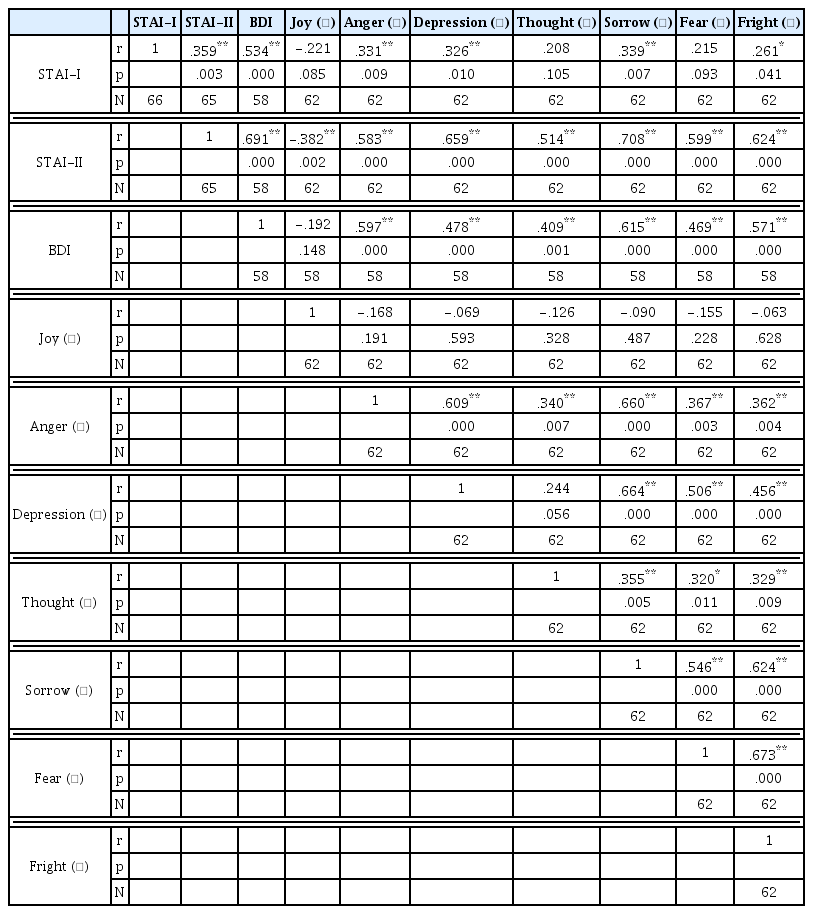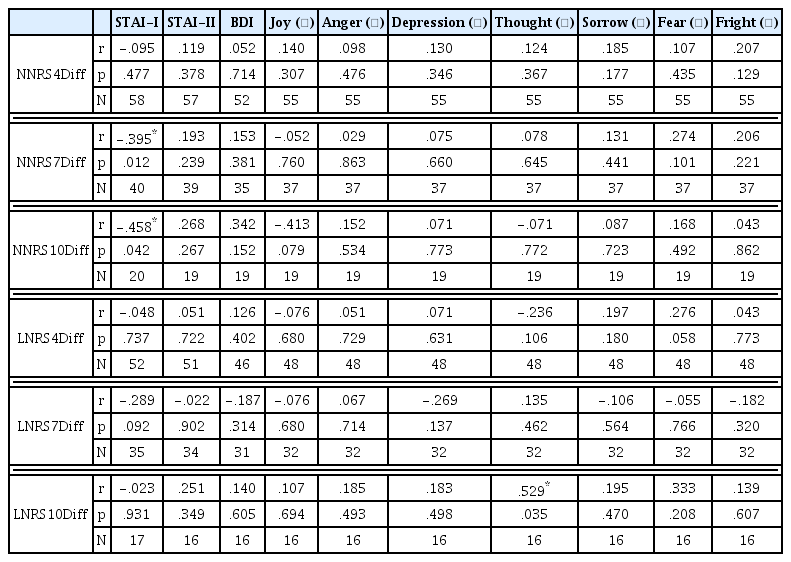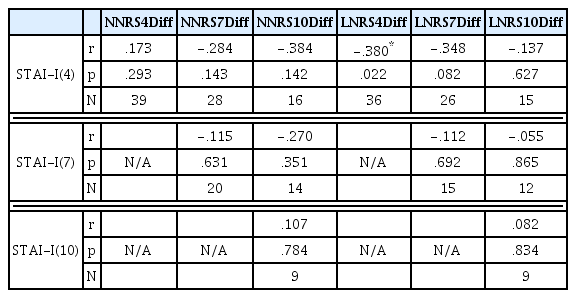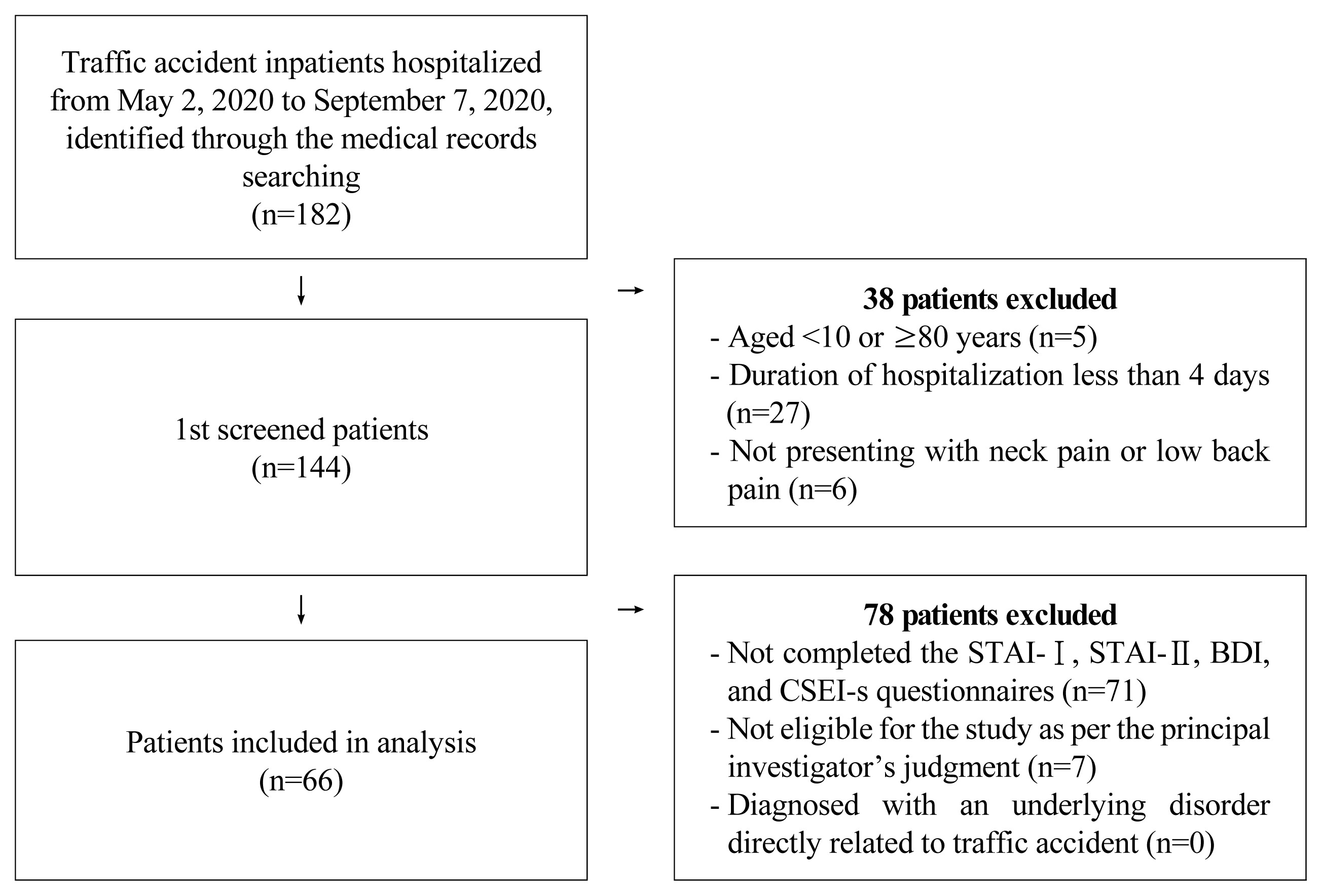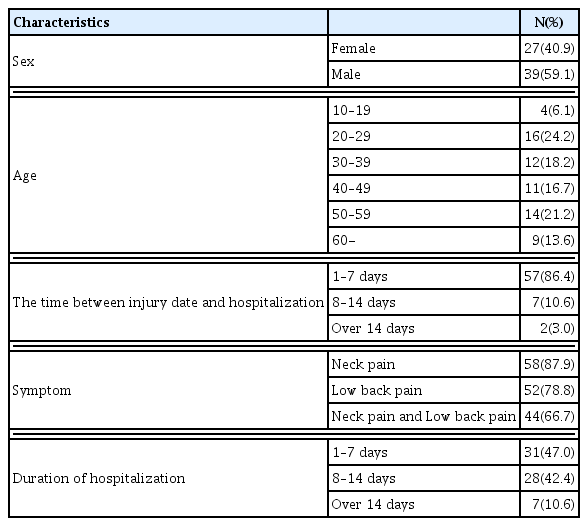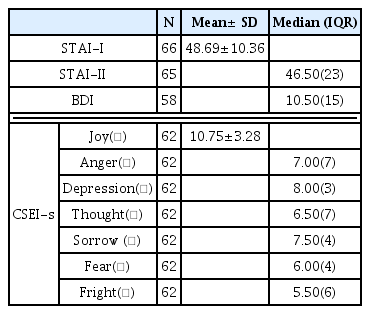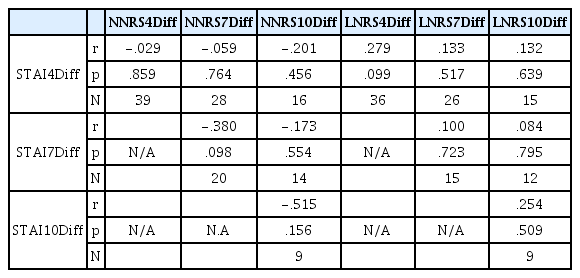References
1. Rehabilitation medicine of Korean Medicine. Oriental Rehabilitation Medicine 4th editionth ed. Seoul: Koonja publishing; 2015. p. 199–206.
p. 236–8.
[In Korean].
2. Baekwasajeonbu Sintae-yangsa Pyeonjip-guk. The Great Medical Encyclopedia Shintaeyangsa Publishing company; 1991. p. 3–34.
[In Korean].
3. Dufton J, Kopes J, Wong H, et al. Prognostic factors associated with minimal improvement following acute whiplash associated disorders. Spine 2006;31:759–65.
10.1097/01.brs.0000240205.93122.02.
4. Buitenhuis J, DeJong J, Jaspers J, et al. Relationship between posttraumatic stress disorder symptoms and the course of whiplash complaints. Journal of Psychosomatic Research 2006;61(5):681–9.
https://doi.org/10.1016/j.jpsychores.2006.07.008
.
5. Richter M, Ferrari R, Otte D, et al. Correlation of clinical findings, collision parameters, and psychological factors in the outcome of whiplash associated disorders. Journal of Neurology, Neurosurgery & Psychiatry 2004;75:758–764.
http://dx.doi.org/10.1136/jnnp.2003.026963
.
6. The Textbook Compilation Committee of Neuropsychiatry of Oriental Medical schools in nation. The Neuropsychiatry of Oriental Medicine Seoul Jip Moon Dang 2016;:520–3.
[In Korean].
7. Kim HW, Kim HJ, Park YH, Keum DH, Lee MJ. Review of Post Traumatic Stress Disorder(PTSD) Symptoms in Traffic Accident Patients. Journal of Oriental Rehabilitation Medicine 2006;16(1):35–47.
8. Lee JE, Cheon HS, Ryu CR, Cho MR, Ryu MS. Comparative Study of General Oriental Medical Treatment and Damjeonggyeok Acupuncture on Pain and Post-Traumatic Stress Disorder due to Trafiic Accident. The Journal of Korean Acupuncture & Moxibustion Society 2009;26(6):151–9.
9. Han C, Park JH, Lee JH, Min KS, Han KW. Changes of quality of life and subjective stress after the oriental medicine treatment, among the patinets who had visited hospital due to traffic accidents. Journal of Oriental Neuropsychiatry 2010;21(2):17–28.
10. Song MY. The effects of Traditional Korean Medical treatment and MMPI characteristics of motor vehicle collision injury patients in Traditional Korean Medical hospital: case series. Graduate School of Dongshin University 2015;
11. Kim SJ. The Study on the Characteristics of MMPI and Stability of Spinal Curvature in Traffic Accident Patients. Graduate School of Dongshin University 2005;
12. Jung KH, Hwang HS, Jeon JC, Kim MS, Park JY, Lee TH, Lee EY, Roh JD. Correlation Analysis of Subjective Stress Caused by Traffic Accident with Prognosis. The Journal of Korean Acupuncture & Moxibustion Society 2009;26(6):161–9.
14. Beck AT. Depression: Clinical, experimental, and theoretical aspects New York: Harper & Row; 1967.
15. Cheong MJ, Lee GE, Lee YS, Bae KH, Kang YS, Kim JH, Lyu YS, Kang HW. Validation of the Core Seven-Emotions Inventory-short form. Integrative Medicine Research 2019;8(2):116–9.
https://doi.org/10.1016/j.imr.2019.04.003
.
16. Shim SY, Park HJ, Lee JM, Lee HS. An Overview of Pain Measurements. The Korean Journal of Meridian & Acupoint 2007;24(2):77–97.
17. Shin BC. Korean Medicine Clinical Practice Guideline for Traffic Injuries. guideline center for korean medicine 2017;:16. [In Korean].
18. Park JH. Effects of Stress induced by Traffic Accidents on the Blood Concentrations of Cortisol, Glucose and Cytokines. The Korean Society of Emergency Medicine 1998;9(4):607–13.
19. Health Insurance Review & Assessment Service. Medical expenses statistics for auto insurance in 2019. Health Insurance Review & Assessment Service 2020;5:47. [In Korean].
20. Ju JH, Kim MJ, Park JH, Ho , Kim HJ, Lee SH, Ki Choi KH. Guideline on Clinical Evaluation of Medicinal Products in the Treatment of Pain. The Korean Society of food, Drug and Cosmetic Regulatory Sciences 2016;11(2):147–58.
21. Behavioral Science Research Center Korea University. Korea University Handbook of Psychological Scales 1 Seoul: Hakjisa; 2007. p. 384–89.
[In Korean].
22. Lee GE, Park BY, Moon KS, You JM, Kang HW. A Study on the Development of the Core Emotional Assessment Questionnaire (CEAQ) Based on the Seven Emotions. Journal of Oriental Neuropsychiatry 2015;26(2):143–60.
